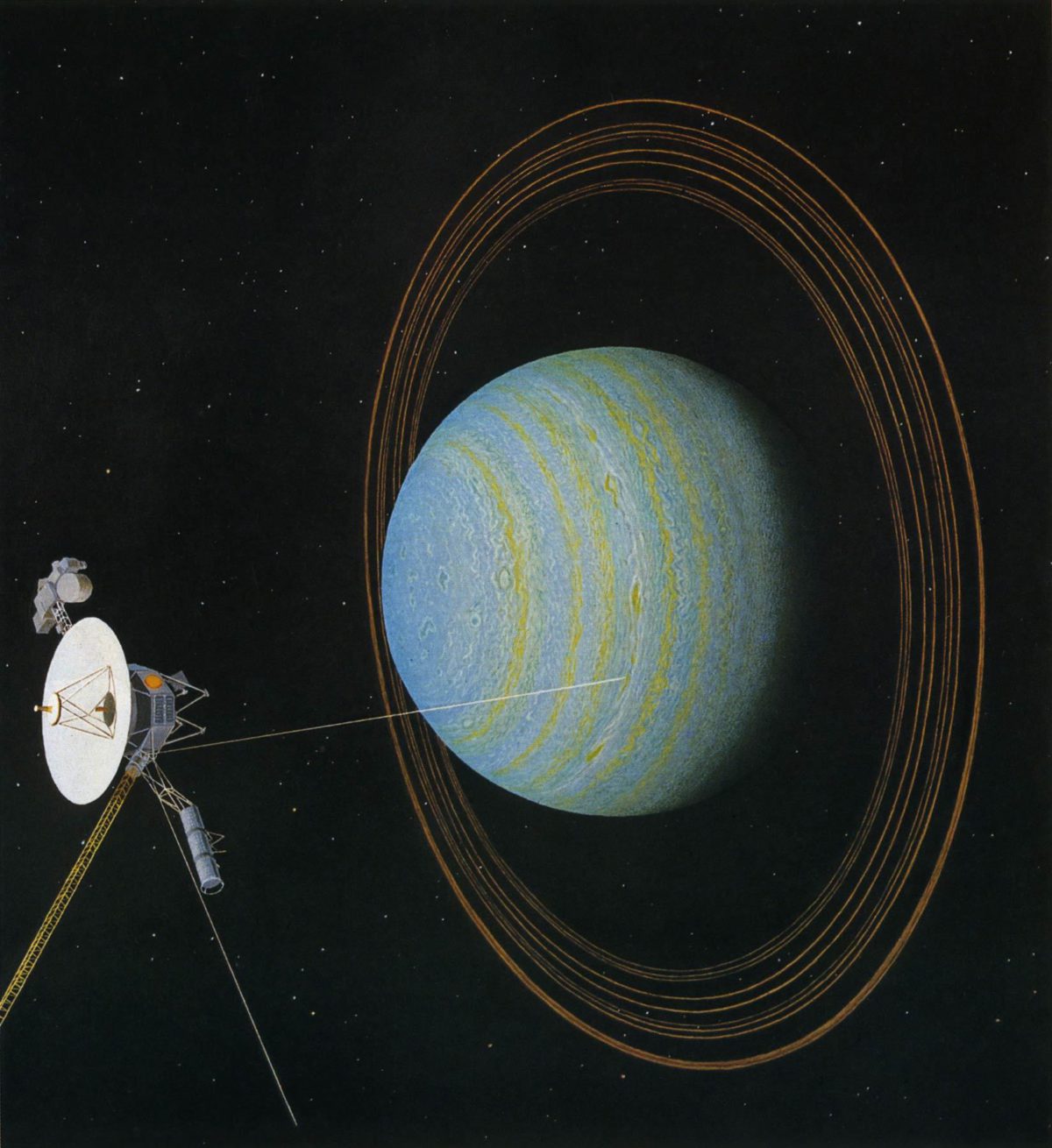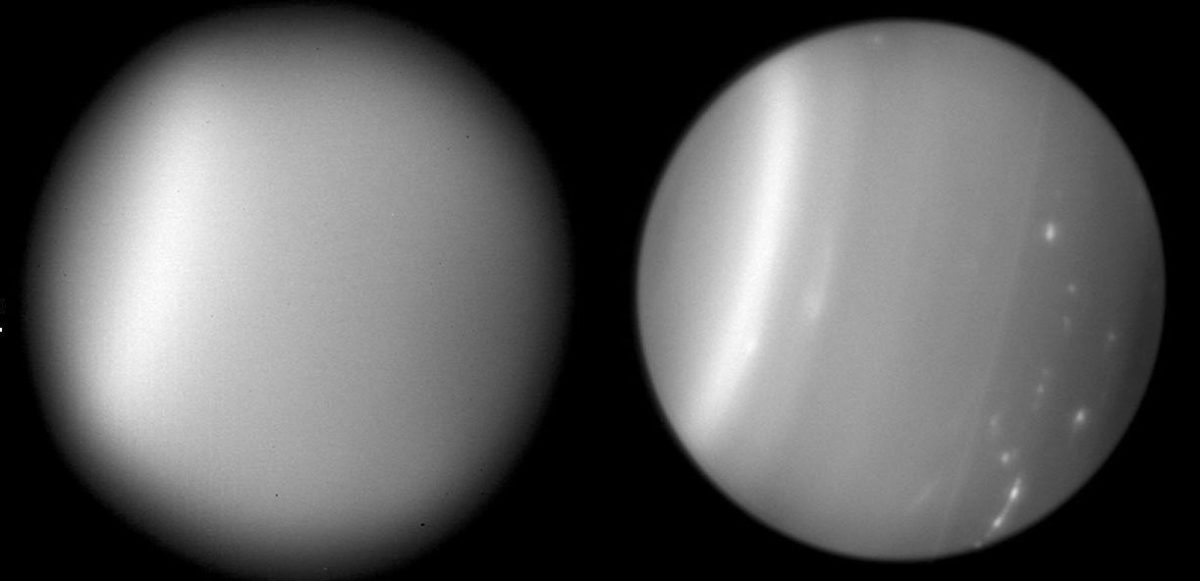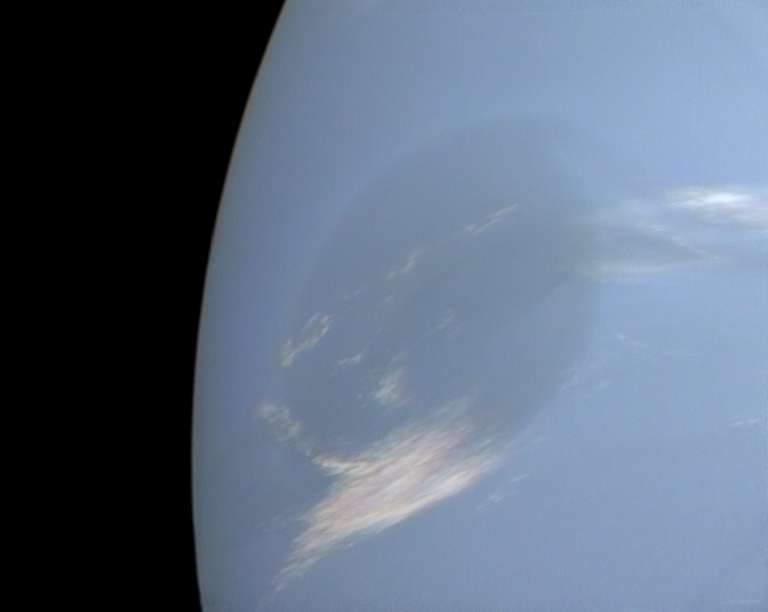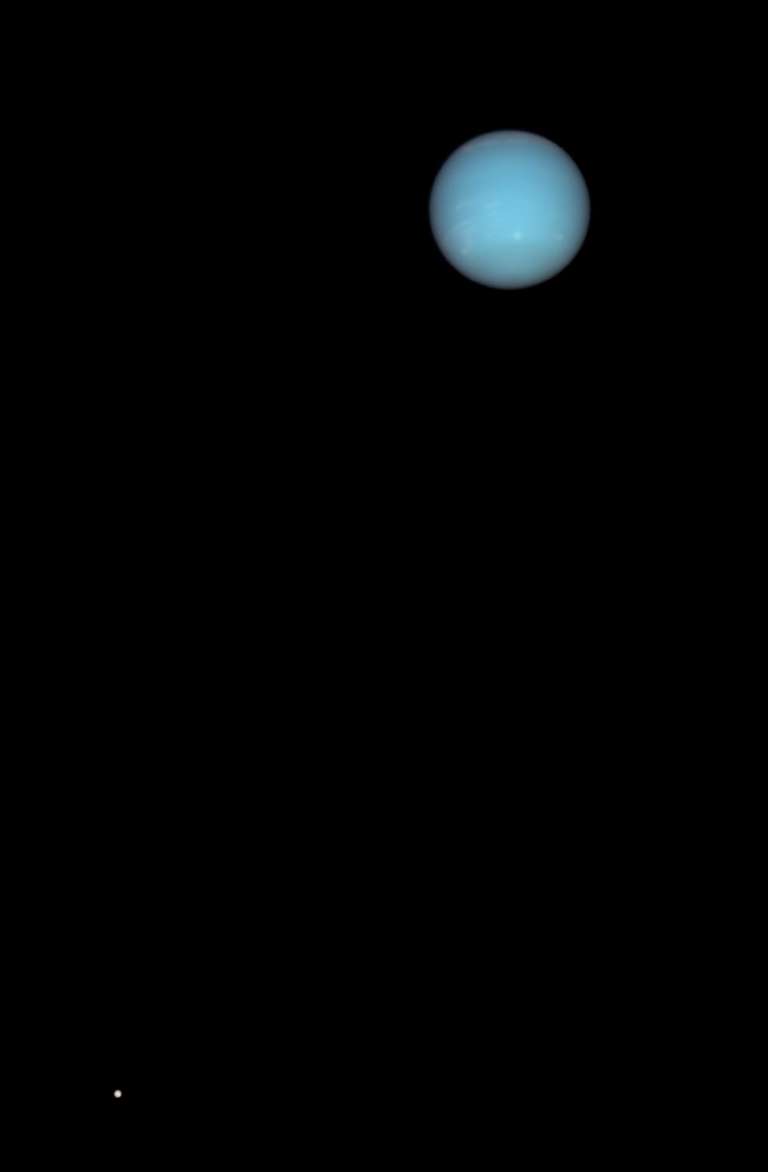Jason Davis • Jun 21, 2017
Revisiting the ice giants: NASA study considers Uranus and Neptune missions
If you look up Uranus and Neptune in an encyclopedia, there's a good chance the pictures you see will be about 30 years old.
In the late 1970s, the twin Voyager spacecraft launched on a grand tour of the solar system, taking advantage of a rare planetary alignment that only happens every 175 years. Voyager 2 flew past Uranus in January 1986, and Neptune in August 1989. The probe was traveling too fast, and lacked the fuel, to slow down and enter orbit.
We haven't been back since.
Every 10 years, NASA releases a report called the decadal survey outlining top priorities for planetary exploration. The current iteration, covering 2013 through 2022, identifies three top missions: Mars sample return, the Europa Clipper, and a return to Uranus or Neptune (Uranus was favored due to more convenient planetary alignments, which affects travel times).
With the next decadal survey just five years away, scientists are revisiting the plan to send a spacecraft to our outermost planets, known as the ice giants. A new NASA report, officially a "pre-decadal" mission study, describes the reasons to go and the spacecraft that could take us there. The report will feed into the next decadal survey, which will lay out NASA's upcoming planetary science priorities.

The evolution of ice giant science
Like most planets, our understanding of Uranus and Neptune has greatly evolved since the early days of planetary science.
Before photographic imagery became a common tool for studying the universe, astronomers spent long, cold nights hunched over telescope eyepieces, hand-drawing what their eyes saw.
Heidi Hammel, a Planetary Society board member and the executive vice president of AURA, a consortium of universities that operates astronomical observatories, told me some early Uranus drawings portrayed the planet with distinct atmospheric features. The advent of photography changed that, revealing the planet as a featureless, pale-green orb. This led to a theory that planets farther from the Sun exhibited less atmospheric activity.
Intuitively, this made sense: Jupiter has vibrant bands and swirls, Saturn is stormy but muted, and Uranus was featureless (Neptune was too far away to discern much of anything).
"When Voyager flew by Uranus, it was like, 'Well, okay, we were right,'" Hammel said. "There were no clouds to look at there. It was very bland, with maybe 10 discrete cloud features."
Neptune was expected to be equally dull. But when Voyager arrived three years later, that wasn't the case.
"Neptune was a huge shock," she said. "There was this huge dark spot, like a quarter of the size of the planet—really monstrous. And then all of these bright features, and eventually a second dark feature, and all sorts of clouds. I mean, this planet was just absolutely covered with storm systems."
Why, then, was Uranus so bland? The question went unaddressed for years, until Hammel saw an academic poster at a conference with long-exposure images of Uranus captured by the Hubble Space Telescope. The images, taken in support of a search for new moons, inadvertently revealed a set of features not seen by Voyager 2.
"I said, what is that?" Hammel recalled. The poster author replied, "Well, that's Uranus."
Uranus, famously, orbits the Sun tipped on its side. When Voyager flew past, the planet's pole was facing the Sun. Since then, Uranus' 84-year orbit around the sun has progressed enough to illuminate more of the equator. This has apparently had a drastic effect on the planet's atmosphere, activating a host of swirls and storms.
Follow-up observations with adaptive optics-equipped ground telescopes continued to reveal new features. As for the early Uranus photographs, Hammel said atmospheric distortion likely smeared out discernible features, meaning those original astronomical drawings may have been correct all along.
"Only now do we have the technology to reproduce what the human eye was able to see back in the eighteen hundreds," she said.

Why go back?
The most pressing question to be solved by a mission to either of the ice giants is figuring out what lies beneath the planets' outer layers of clouds. This is similar to the question NASA's Juno spacecraft is trying to answer at Jupiter.
Figuring out these planets' basic compositions and interior structures would fill an important gap in our knowledge of how solar systems form. Among the exoplanets we've discovered, worlds weighing the same as Uranus and Neptune appear more common than gas giants like Jupiter and Saturn. Yet ice giants seem to require a very specific set of conditions to form during the birth of a solar system.
"Based on the current models, it looks like there's only a really narrow time window when you can get these sort of planets to form," said Amy Simon, a senior scientist at NASA's Goddard Space Flight Center. "You need to have a big enough core, but on the other hand, you need to have the solar nebula dissipating so that you can get these gas and ices in there at the same time."
Simon co-chaired the science team for the new ice giants report. She told me the reasons to go back, as well as the top science priorities, have not drastically changed since the last decadal survey.
"There weren't a ton of changes," she said. "The focus was on a more detailed study of all the mission trades, to look at the technology you might need, and what type of mission you'd like to fly."
All of the mission concepts envision detachable probes that would be sent hurtling into the ice giants' atmospheres. The main spacecraft would remain in orbit at least two or three years, and be nuclear-powered, owing to the small amount of sunlight reaching that far into space.
The basic set of proposed science instruments include a camera, magnetometers and a doppler imager. The doppler imager, Simon said, was a particularly innovative example of how the planets' interior structures could be revealed.
"The idea behind it is that you're essentially looking for seismic waves on the planet," she said. "You're looking to see the planet oscillate. And the idea behind that is similar to studies they've done on the Sun, where you can see the Sun oscillating and you can determine its interior structure."

The moons
The Voyager 2 mission also captured one-sided glimpses of Uranus' and Neptune's major moons.
One of the most interesting moons turned out to be Triton. Triton is believed to be a Kuiper Belt object captured by Neptune's gravitational pull. In the process, Triton either smacked into the rest of Neptune's moons or flung them out of the system entirely.
Voyager images revealed a relatively young surface that looked like the skin of a cantaloupe, with nitrogen-spewing geysers in the southern hemisphere.
"And again," said Simon, "We've only seen part of Triton. Who knows what's on the other side?"
"With Triton, you can do comparative planetology to Pluto," Hammel said. "They're a matched set of Kuiper Belt objects, like fraternal twins who were separated at birth and took on completely different life stories."
Uranus, on the other hand, has five large moons: Miranda, Ariel, Umbriel, Titania, and Oberon. Unlike Triton, they are likely native to the planet's system, making them our only chance to study large worlds leftover from an ice giant's formation.
The new report does not single out a preference for visiting either Uranus or Neptune. Both are "equally compelling as a scientific target," it said.
"Each planet has something important to teach us that the other cannot," said Hammel. "I think the deciding factor will probably have to do with what launch vehicles are available, and what trajectories are most favorable to get us to those planets in a reasonable amount of time. Scientifically, your bounty is going to be fabulous for either planet."

Getting there
What, exactly, constitutes a reasonable amount of time for getting to Uranus or Neptune?
Simon said the report assumes a spacecraft life of about 15 years, even though missions like Voyager, as well as the Cassini spacecraft at Saturn, have exceeded that.
"There are reliability limitations on the hardware," she said. "Even though we've seen propulsion tanks last longer than that, that's just not how they're rated. We didn't want to be pushing the reliability too hard."
The travel time to Uranus, using an Atlas V with five solid rocket boosters, is 12 years for an orbiter. It takes 13 years to get to Neptune using a Delta IV Heavy launcher—and that's with an extra solar-electric propulsion stage to add additional thrust. All missions require Jupiter gravity assists, as well as likely flybys of Venus and Earth.
NASA's heavy lift Space Launch System, SLS, could potentially shave four years off the transit time. But there's a catch: a spacecraft can't go too fast, because it still has to slow down to enter orbit upon arrival. The report notes aerocapture techniques—basically, skimming the planet's atmosphere to shave speed—could allow for higher cruising velocities.
A vehicle like SLS could, however, launch two missions at once. But that's assuming NASA spends what could end up being $2 billion per mission.
Good launch windows are available for Uranus between 2030 and 2034, while Neptune trajectories are favorable around 2029. That means we might not get to see the ice giants again until the late 30s or early 40s.
That's still okay with both Hammel and Simon.
"I kind of hope this excites younger scientists, because this will be their mission," said Simon, who recalls seeing Voyager 2 images on TV as a child. "We might get it off the ground for them, but they are going to be the scientists doing the activities. So I really hope it does generate a lot of interest in early career folks, and in the public."
Let’s Go Beyond The Horizon
Every success in space exploration is the result of the community of space enthusiasts, like you, who believe it is important. You can help usher in the next great era of space exploration with your gift today.
Donate Today

 Explore Worlds
Explore Worlds Find Life
Find Life Defend Earth
Defend Earth

